
All categories
Featured selections
Trade Assurance
Buyer Central
Help Center
Get the app
Become a supplier

(124616 products available)
















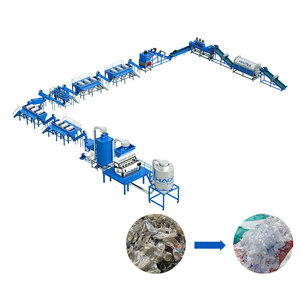
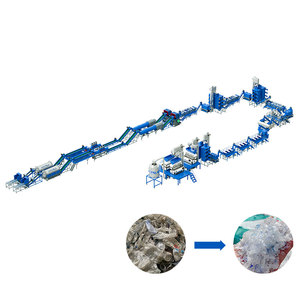




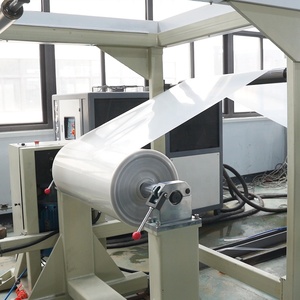

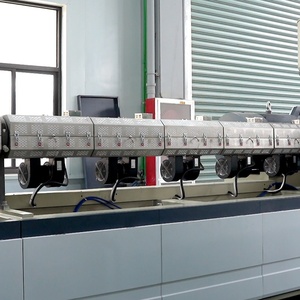
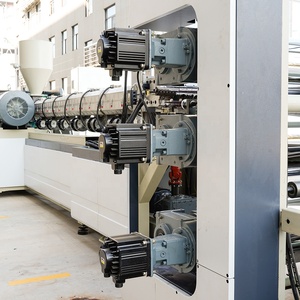

The plastic grading machine has prominent types based on the production process and final products. Businesses can select the machine based on the kind of waste material and output requirements.
Bypass/Secondary/grading Plastic Recycling Machine
This machine's primary function is to separate the types of plastic put in the recycling facility. It minimizes the volume of plastics that must be dealt with in subsequent steps. Primary sorting is accomplished by employees working on the floor, but secondary sorting can take place after bypass. Technology accomplishes this. The material is examined in further detail, and plastics that are not economically recyclable are set aside for landfill or incineration. Technological advancement is crucial to secondary grading. The kinds of plastic that can be recycled and those that cannot are cataloged, and standards for quality are set.
Multi-Stage Plastic Grading Machine
Multi-stage machines allow for grading of various qualities of plastic in different stages. As more grades are developed, the value of the material increases, and there is potential for return on investment. Usually, the initial grades are low-quality grades, such as HDPE or HIPS, that are not colour-specific. Higher-value grades are Leucite, for example, that is white, Cloudite, is translucent, or Polypropylene that is colour-sorted Blue.
Primary Grading Plastic Recycling Machines
These machines sort through the most significant volumes of plastic and are the first in the sequence. An enormous quantity of plastic has to be dealt with when the recycling process begins. Low-quality plastics are the initial outputs, such as mixed plastic or unsorted LDPE. Further grading and sorting will take place later, but substantial volumes of plastic must be processed for it to be economically viable.
Singe Grading Recycling Machine
These machines are dedicated to serving only one type of plastic. A single-piece plastic grading machine is more cost-effective, efficient, and simple. Set-up changes are not required; however, it will only generate one type of end product that is high quality. If the requirement is to manufacture a single-grade material of plastic, then this would be the most suitable investment.
Plastic Grading Machine with Auxiliary Systems
Auxiliary systems help to further function and be more productive. They could be integrated feeding systems, cooling systems for the material, and melting systems to treat and handle the plastic better and more effectively.
Plastic grading machines have increasingly widespread applications in different sectors of the economy.
Recycling companies
Plastic grading machines are principally used by recycling companies. Such companies collect different plastic materials from various sources. They then use the machines to sort the plastics according to their resin types. By doing so, the companies ensure that they have homogenous plastic materials for subsequent recycling processes.
Manufacturing industries
Several manufacturing industries use plastic grading machines to separate incoming plastic materials. For instance, the food packaging industry handles different types of plastics. All these must be appropriately categorized to comply with industry standards and ensure quality.
Similar to the above, automotive manufacturers use the machines to separate different grades of plastics for production lines. This is to ensure that they have the right materials for their products.
Educational institutions
Universities and research labs with environmental sciences or materials engineering programs usually use plastic grading machines. They use the machines for educational purposes such as hands-on training, experiments, and research projects. In such cases, the machines are used to study the properties of different plastic grades.
Municipalities and government agencies
Many municipalities and government agencies are in charge of waste management within their jurisdictions. To do this efficiently, they collect, handle, and process various types of plastic wastes. Plastic grading machines can help them to sort out the plastics according to their resin types. With this, the agencies can streamline their recycling efforts or oversee proper disposal.
Besides, some governments have established educational centers aimed at raising public awareness of plastic pollution. Such centers may use plastic grading machines for educational purposes to demonstrate plastic pollution challenges, recycling processes, or proper plastic disposal methods.
Customs and border control
When plastic materials are imported across national borders, customs and border control agencies must inspect and sort them out. The aim is to ensure compliance with regulations governing plastic imports.
Plastic grading machines provide a convenient and efficient way for customs agencies to separate different plastic types. In turn, they can ensure compliance with established regulations. They can also prevent the entry of undesirable plastic materials.
When buying plastic grading machines for business use, it's important to carefully consider each machine's quality and features. Focus on the machine's build quality to ensure it can withstand constant use without frequent repairs. Look for strong materials like stainless steel and a robust construction. Check if the machine has adjustable settings for processing different types of plastics, as this flexibility can benefit various business needs. Feed size tolerance and capacity also impact suitability—select models that can accommodate the plastics typically handled by a particular business and have high throughput that matches workflow demands.
Energy efficiency matters too, especially for machines that will run for long hours. Investigate the power consumption to choose options that won't significantly raise electric bills. Noise levels are another operational factor. Some plastics grading machines can be quite loud, which may not be suitable for all work environments; consider grading machine's volume and only select noisy ones if proper soundproofing isn't feasible. When buying several machines, their space requirements become critical. Ensure enough room exists to safely house all units purchased. After confirming a machine's size fits facilities, review the electric power requirements to make sure the building's wiring can support it.
Research the supplier and check reviews from previous customers to gauge satisfaction and reliability. Thoroughly investigate machinery before committing to ensure it suitably supports business operations by effectively processing plastic waste.
Q1: What are the benefits of using a plastic grading machine in the recycling process?
A1: Plastic grading machines enhance the quality of recycled materials by separating contaminants and undesired plastics, leading to a more pure final product. Their automatic separation capabilities boost productivity by minimizing manual sorting fatigue and accelerating the sorting procedure. They also decrease contamination in the recycling stream, which, in turn, enhances the efficiency of subsequent processing steps and reduces operational costs.
Q2: Can plastic grading machines handle different types of plastics simultaneously?
A2: Plastics grading machines are designed to process various plastic types concurrently. Nonetheless, the machines are set up to separate distinct plastic categories, which may necessitate adjusting the machine parameters or reconfiguring the grading components. In addition, after processing, the plastics will be separated from each other so that they can be recycled appropriately.
Q3: Are plastic grading machines cost-effective in the long run?
A3: While the initial investment in purchasing a plastic grading machine may be significant, these machines are economic in the long run. This is due to their high throughput capacity, which minimizes labor costs and boosts operational efficiency. Moreover, the improved quality of the graded plastics can fetch higher market prices, resulting in increased revenue.
Q4: What is the role of air classifiers in plastic grading machines?
A4: Air classifiers are crucial in plastic grading machines. They use air flow to separate plastic particles based on their weights and sizes. The classifiers create a gusty stream that lifts lighter particles, including paper and film plastics, while heavier ones, including rigid plastics and containers, drop down. This enables the machine operators to have different types of plastics in their processing line.
Q5: How does the plastic grading machine contribute to a circular economy?
A5: The plastic grading machine plays a vital role in fostering a circular economy by ensuring that different types of plastics are accurately separated. This facilitates their individual recycling processes. Moreover, the machine enhances the quality of the recycled materials, thereby closing the loop and generating raw materials that can be used to produce new plastic products.